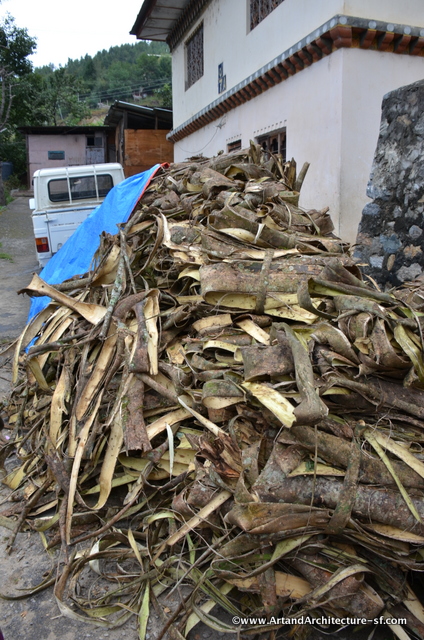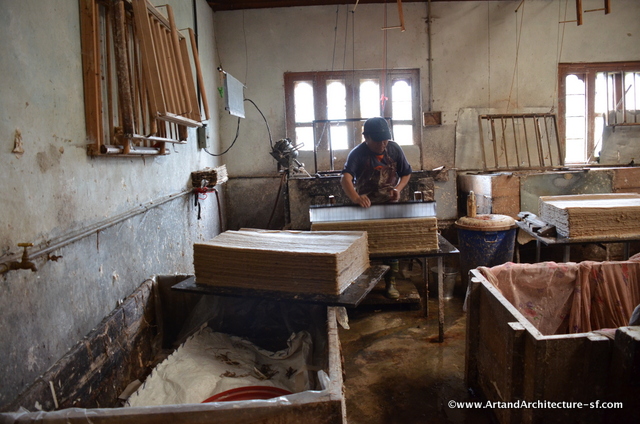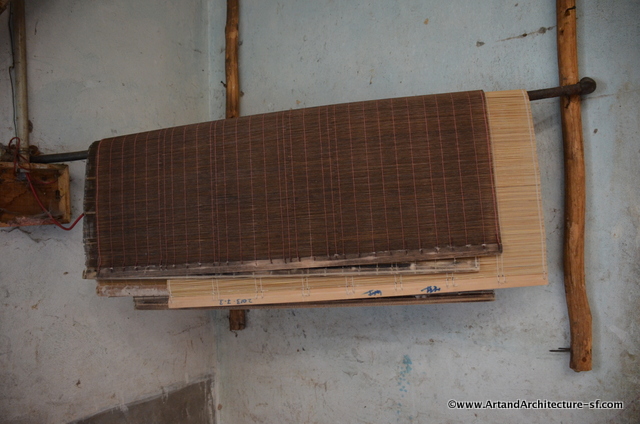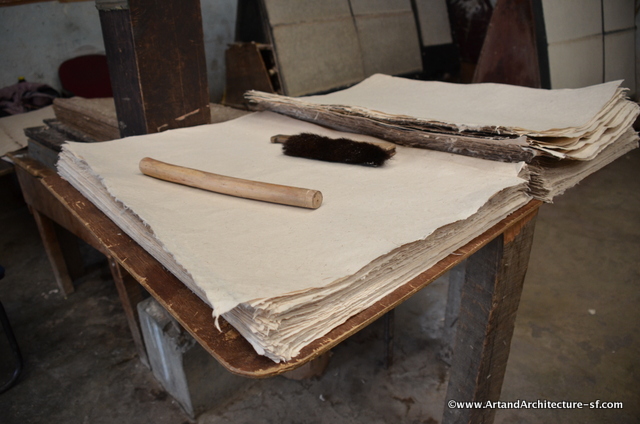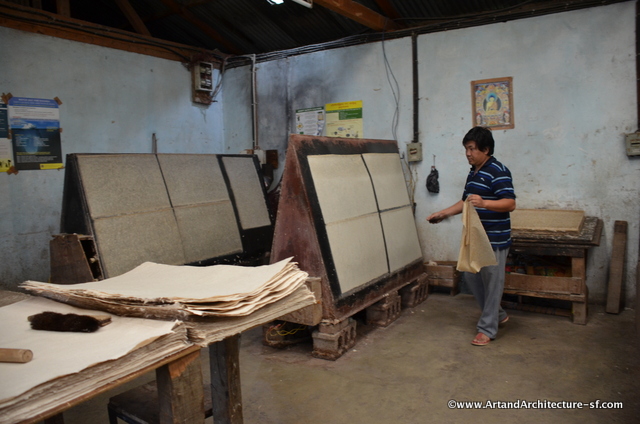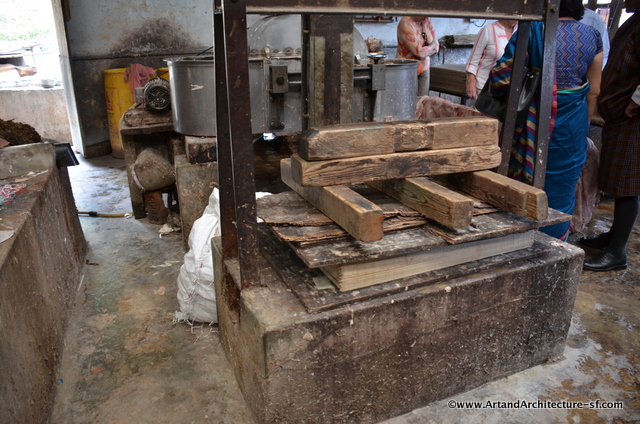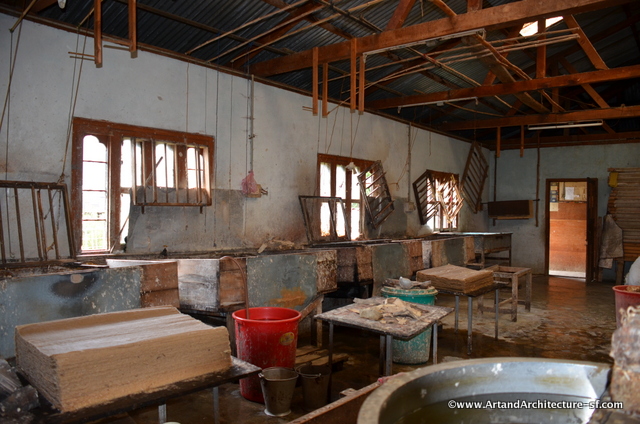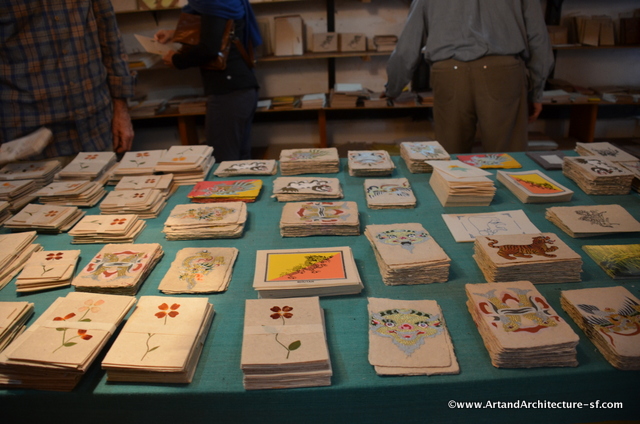Bhutan
September 2015
In Thimphu there is the Thimphu Institute for Zorig Chusum. This school, established in the 1970s is for preserving the traditional crafts of Bhutan. The course of study is between 5 and 6 years and teaches the 13 original crafts.
Students are tested and then placed in the craft school most appropriate to their talents, they are all on scholarships.
The 13 crafts are:
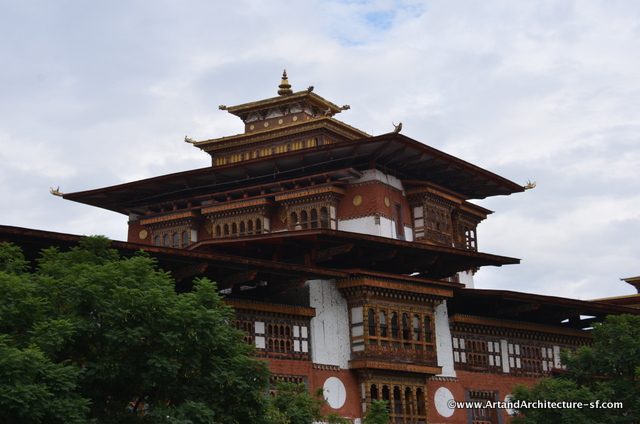 Carpentry (Shingzo), these craftsmaen are involved in the buildings of dzongs, temples, palaces and houses.
Carpentry (Shingzo), these craftsmaen are involved in the buildings of dzongs, temples, palaces and houses.
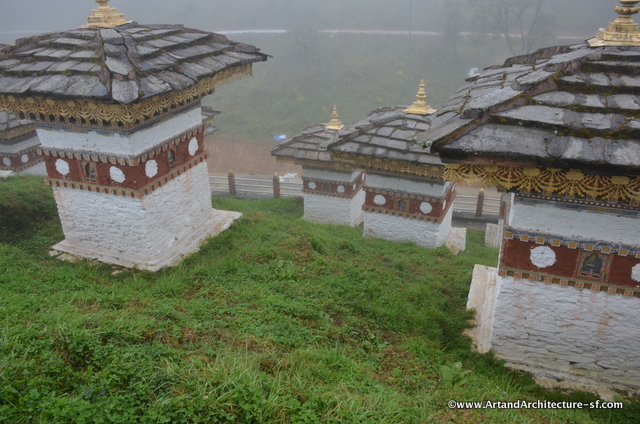 Masonry (Dozo) This craft is associated with the building of chortens, dzongs, temples but also heavy millstones and stone pestels.
Masonry (Dozo) This craft is associated with the building of chortens, dzongs, temples but also heavy millstones and stone pestels.
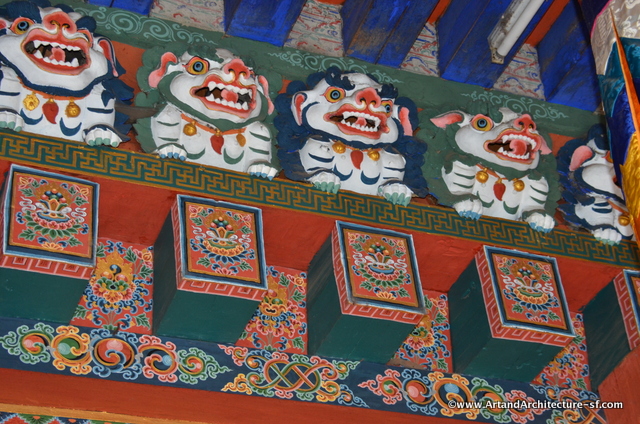 *
*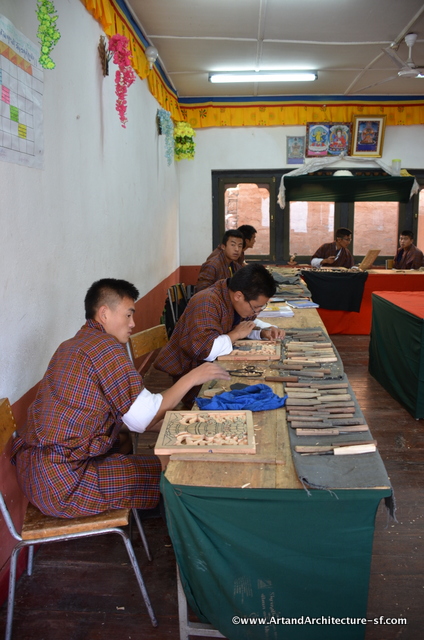 Carving (Parzo) is not only on wood, but also slate and stone. This work is most evident to the tourist in all the beautiful carved wood work on homes, hotels and buildings throughout Bhutan.
Carving (Parzo) is not only on wood, but also slate and stone. This work is most evident to the tourist in all the beautiful carved wood work on homes, hotels and buildings throughout Bhutan.
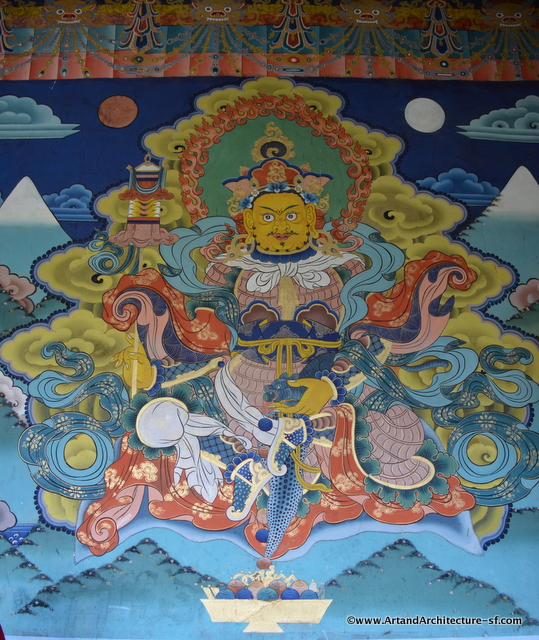 Painting (Lhazo) is both drawing and painting in Bhutan. The work of thee craftspeople can be found in the temple and dzong murals as well as all the symbols that grace the homes of the people of Bhutan.
Painting (Lhazo) is both drawing and painting in Bhutan. The work of thee craftspeople can be found in the temple and dzong murals as well as all the symbols that grace the homes of the people of Bhutan.
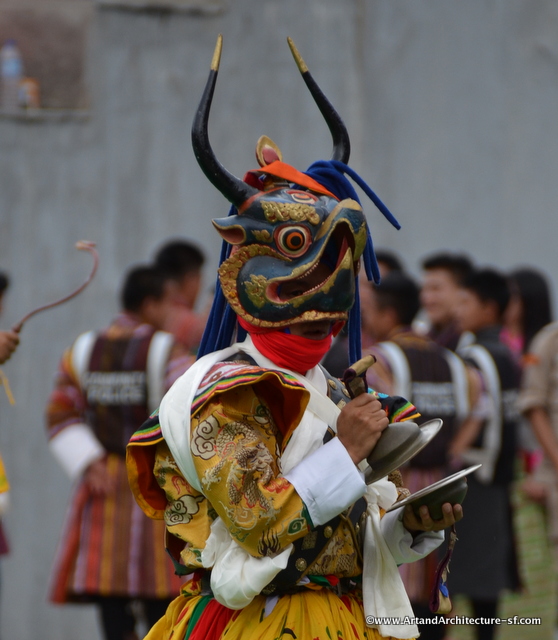 Sculpture (Jinzo). This is the art that is hardest to find throughout Bhutan, as it is mainly in the temples, and most often, behind the alter of the temple. The place where a tourist has the opportunity to see the work of these craftspeople is in the masks worn during tsechu.
Sculpture (Jinzo). This is the art that is hardest to find throughout Bhutan, as it is mainly in the temples, and most often, behind the alter of the temple. The place where a tourist has the opportunity to see the work of these craftspeople is in the masks worn during tsechu.

This is a ritual dagger called a Phurba (it is not sharp and is not meant to hurt a sentient being). It is used against evil spirits.
Casting (Lugzo) ususally refers to bronze and is found in the making of musical instruments and kitchen utensils, but also jewelry.
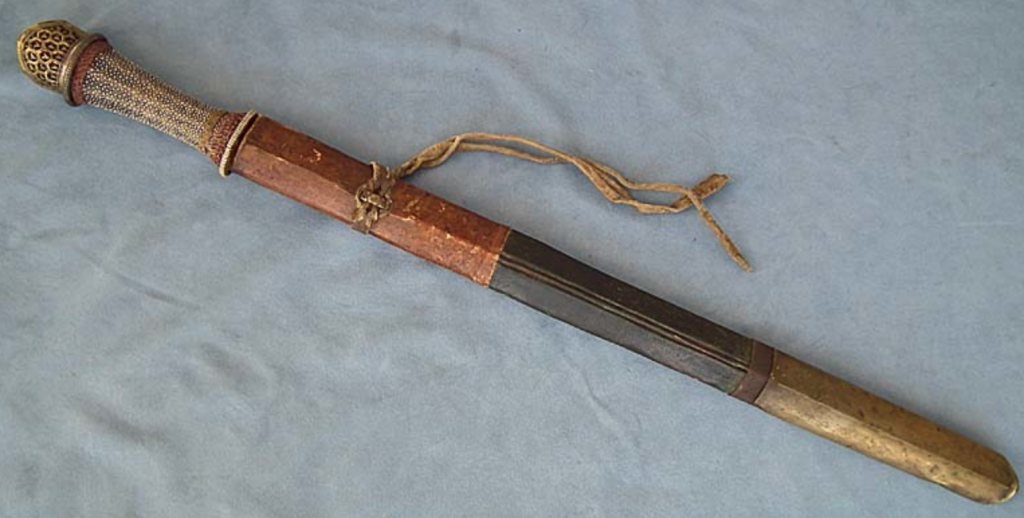 Blacksmithing (Garzo) is what it implies, but is also used in axes, plough blades, chain making and swords.
Blacksmithing (Garzo) is what it implies, but is also used in axes, plough blades, chain making and swords.
 Gold and Silversmithing (Trozo) also includes copper and can be beaten, drawn or engraved work.
Gold and Silversmithing (Trozo) also includes copper and can be beaten, drawn or engraved work.
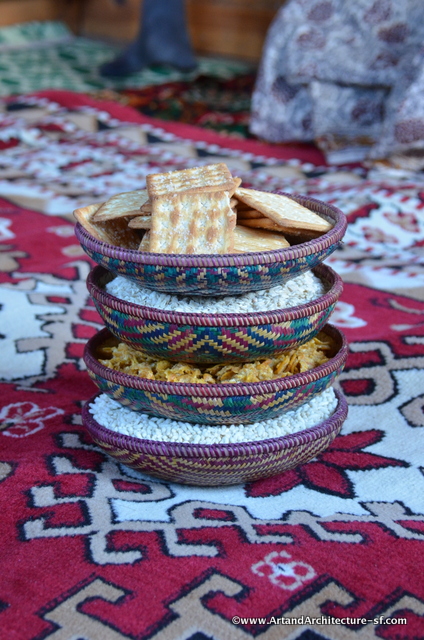 Bamboo Work (Tshazo) This work is still found, more in the countryside, than in the cities. The most common type of this work is for the arrow quiver, but it also includes bangchung, covered bowls for carrying food palang for storing liquor, and belo which are small hats.
Bamboo Work (Tshazo) This work is still found, more in the countryside, than in the cities. The most common type of this work is for the arrow quiver, but it also includes bangchung, covered bowls for carrying food palang for storing liquor, and belo which are small hats.
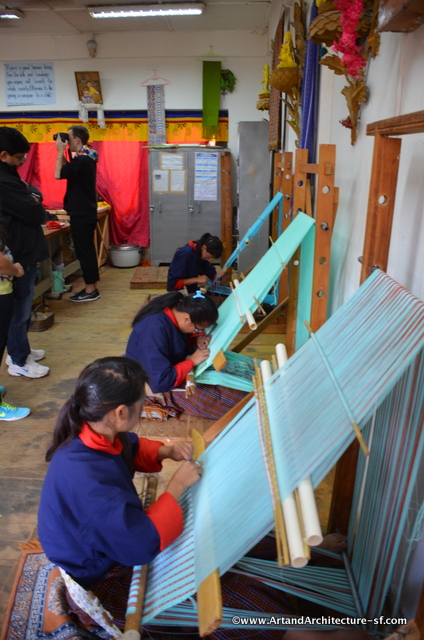 Weaving (Thagzo) covers the entire process including preparing and dying the yarns, this is the largest crafts industry in Bhutan.
Weaving (Thagzo) covers the entire process including preparing and dying the yarns, this is the largest crafts industry in Bhutan.
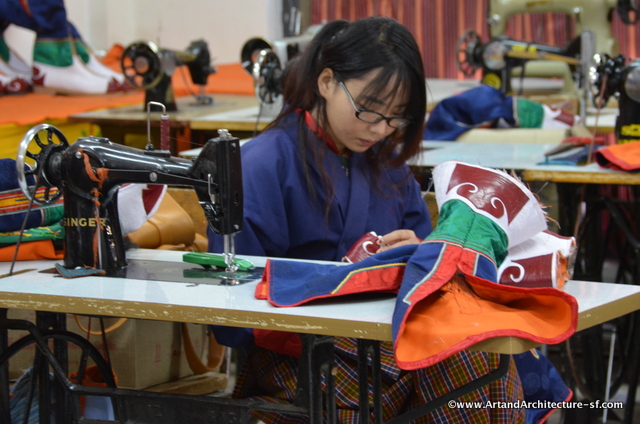 Embroidery (Tshemzo). This has two specialties One is the items which are sewn and then embroidered, the second refers to the applique works.
Embroidery (Tshemzo). This has two specialties One is the items which are sewn and then embroidered, the second refers to the applique works.
 Woodturning (Shagzo) This is where Bhutans beautiful wooden bowls come from. This craft also includes the making of the small drums used during religious ceremonies.
Woodturning (Shagzo) This is where Bhutans beautiful wooden bowls come from. This craft also includes the making of the small drums used during religious ceremonies.
Papermaking (Dezo) is the skill that is rapidly being lost In Bhutan. The paper is made from the bark of the daphne, but has grown to include bamboo and rice stalks. We visited a paper making factory in Thimpu, and here are shots from that factory. It is a family run business, now in its second generation.
